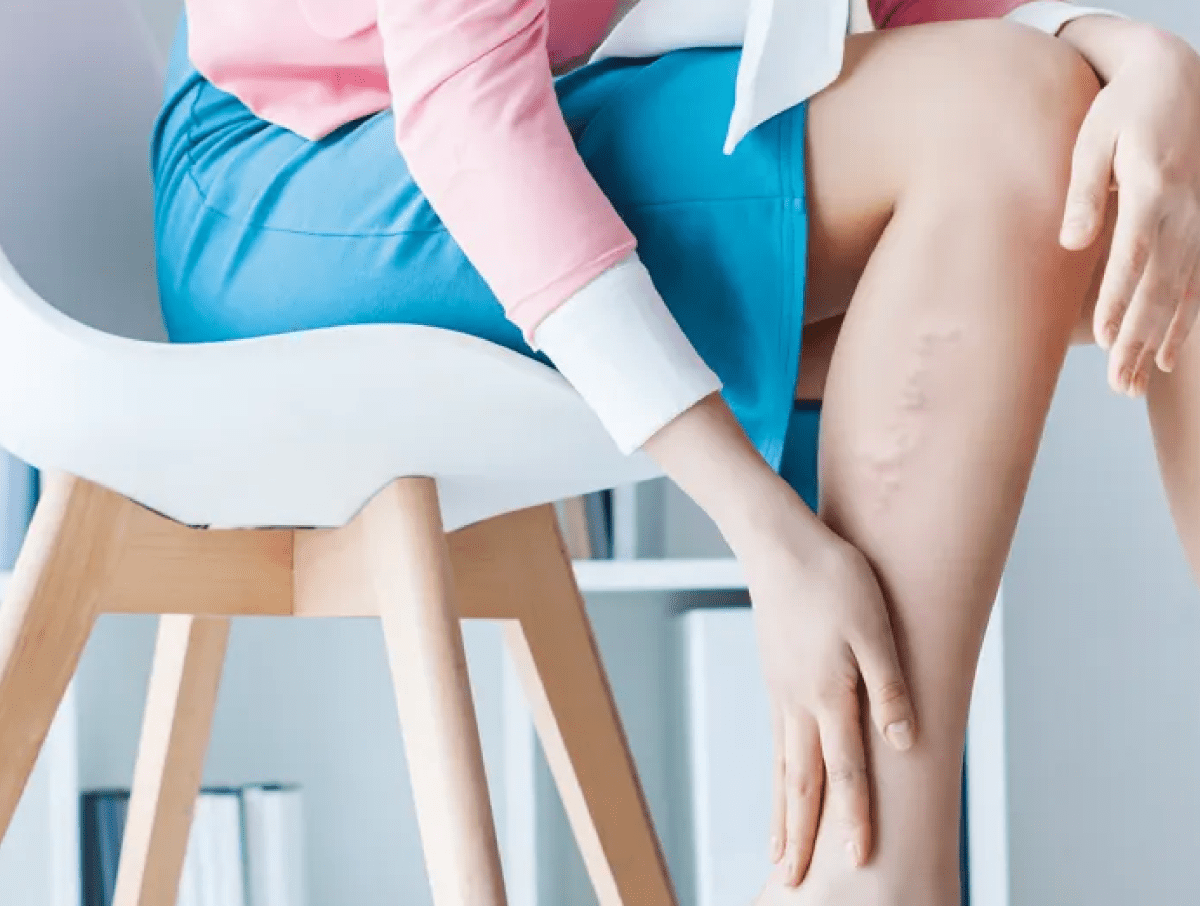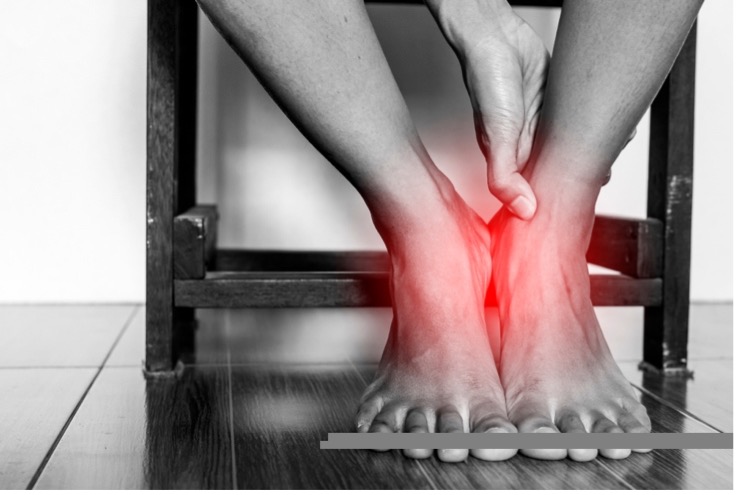
Firstly, let’s understand what we mean by ‘varicose veins.’
Often referred to informally as ‘spider veins’, they are highly visible and thickly stretched veins of the lower leg, almost snake-like in their appearance in terms of length. We start to develop them when tiny vein valves within the leg start to weaken.
Normally, veins push blood back to the heart but when the valves weaken, the blood flow backwards and end up collecting in the vein. The inadequate circulation keeps up the blood level in the lower leg for longer time, putting pressure on the walls of the vein and bulging out, causing ‘varicose veins.’ If left untreated, they become swollen and cause painful aches.
Why do more women develop varicose veins than men?
Studies show that varicose veins and spider veins are very common, affecting about 40% of men and 70% of women by the time they turn 60.
So why do varicose veins in women take center stage? Considering the extra responsibilities of the balancing act between home and the multi-faceted roles at workplace for women, it’s not surprising to trace its alarming growth to professions that involve standing for long hours on feet, especially among teachers, sales executives, Doctors, or nurses, requiring urgent spider vein treatment.
However, the reasons as to why they are found to occur more commonly among women boils down to two key causes: pregnancy and hormones.

Pregnancy
When you’re pregnant, nature follows a natural path in supplying oxygen and nutrients required for your baby’s growth by increasing your blood volume. When this happens, your blood vessels and veins can swell up causing ‘pregnancy varicose veins’. The weight around your belly also adds more pressure on your leg veins resulting in weaker and damaged valves, causing varicosities.
Hormones
Female hormones such as estrogen that play an important role in fertility and menstruation, are partly responsible for why women are more likely to develop varicose veins than men. These hormones cause the muscles that control the movement of blood in your veins to relax, which in turn affects the blood flow and lead to accumulation of excess blood.
Other key causes:
Watch out for alcohol!
Apart from pregnancy and hormone-related issues, did you know that drinking alcohol excessively can also contribute to developing varicose veins? Consuming large amounts of alcohol can increase your heart rate causing the blood to pump faster through the veins which in turn, can lead to heavy stress on the veins of your legs. This has a knock-on effect on your liver functions too, as they are unable to properly filter out alcohol from the blood which causes it to thicken. This makes the blood harder to flow through your veins, causing them to bloat on your legs as ‘spider veins’.
Smoking is bad news for varicose veins!
Smoking is another culprit, as the nicotine in cigarettes narrows your blood vessels, limiting blood flow to your veins. All the chemicals in cigarettes aggravate the formation of plaques/clots in your veins and arteries. What’s really frightening is that the damage goes beyond just varicose veins – they create complications in your heart, given the blockage of blood in your veins and arteries and are therefore life-threatening.
In addition, to pregnancy and hormones, some may have a familial predisposition to develop varicosities.
What are varicose veins symptoms?
Snake-like appearance of veins: The most visible symptom of course are the bulging blue and purplish veins that form as clusters on your lower feet and ankles.
Aching legs/ tiredness: Your legs may experience a kind of tingling and heaviness and appear sluggish and inactive.
Shooting pains: You will experience painful leg aches and soreness, followed by bouts of muscular cramps.
Unstoppable itching: Occasionally, you will experience itching sensations and a kind of tingling with/without dark pigmentation around the ankles.
Bulging and inflammation: Over time, varicose veins can bloat and cause brown spots and may cause skin breakdown leading to potential issues like infection, leg ulcers and thrombosis.
We would recommend a visit to any of our doctors at HealthHub Clinics and booking an appointment to know more, or to get this immediately treated.
Is crossing your legs at the knee linked to varicose or spider veins?
Even though it sounds almost real, crossing your legs or wearing high heels do not cause varicose veins. Then again, if you can’t shake off the habit of continuously shaking your legs, chances are you’re probably stuck at a desk job which follows a sedentary life pattern.
Some people also think that calves don’t flex as much when they wear high heels, which could be a cause of varicose veins. The important thing to remember is not how you wear it, but how long you continue the habit – the longer you move around in high heels, or the more you keep shaking your legs, the more your chances of being vulnerable to varicose veins!
How can you avoid them?
Developing and following some useful habits on your daily schedule can relieve you from symptoms and may help prevent development of varicosities.
Make sure you stay active during the workday, especially if you have a job that requires prolonged standing or sitting. A 30-minute early start to the day kept aside for brisk walking can do wonders for your blood circulation.
If your jobs however demands long periods of standing all day, wearing compression stockings is a good idea to avoid and manage early symptoms, such as heavy, tired legs, swelling, and cramping.
Remember to get up and walk around every 30 minutes, especially when you are at your office desk hunched over hours of non-stop work or at home, binging on Netflix from the comfort of your sofa. The same advice would go for standing for longer durations – remember to take a break every 30 minutes by walking around or sitting down.
How do you treat varicose veins?

- Sclerotherapy – Among varicose veins treatments, an injection for spider veins delivers results that are quick and efficient.
- Vein ablation – This is a procedure that uses tiny electrodes placed at the tip of a catheter which is inserted into the varicose vein. The heat generated by the electrodes around the walls of the vein destroy the vein tissue.
- VenaSeal – This involves injecting medical-grade glue into an affected vein to help seal it off once and for all – a great substitute to wearing compression stockings.
- Laser treatment—A tiny fiber is inserted into the affected vein to emit laser energy that destroys the diseased portion of your varicose vein.
- Compression stockings – This is largely a home remedy that involves elastic stockings that squeeze veins which stop the excess blood from flowing backwards and eventually provides relief from pain and swelling.
Article reviewed by:
Dr. DHANASHRI PATIL, Specialist General Surgeon, HealthHub Clinics
Talk to our expert vascular surgeons at HealthHub Clinics to find the right solution for your legs. To know more or to book an appointment right away with the best vascular surgeon, call 800 2344.







